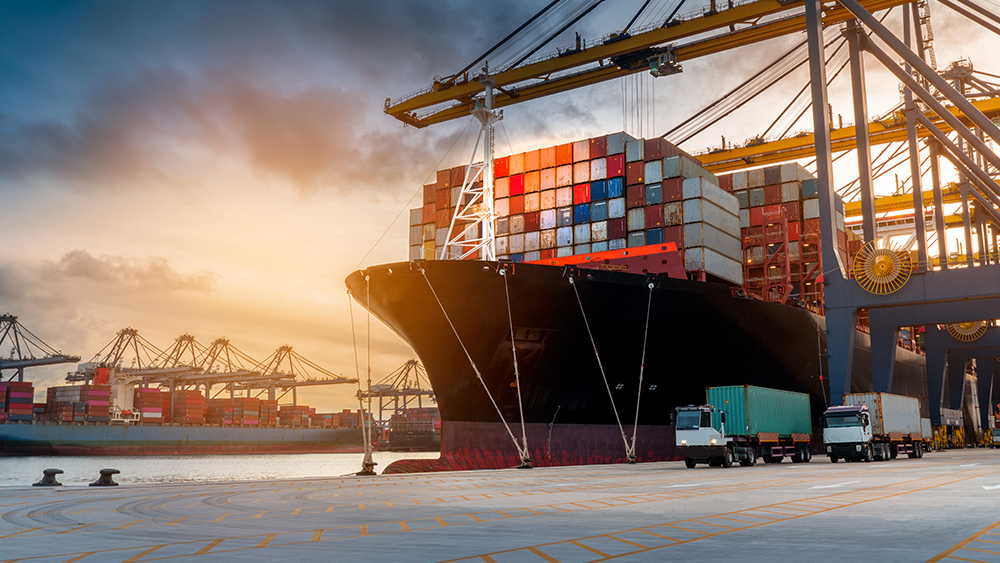China settles first LNG trade using YUAN – a major blow to the petrodollar
04/03/2023 / By Ramon Tomey

The People’s Republic of China settled its first liquefied natural gas (LNG) trade using the yuan, its own currency – dealing a major blow to the petrodollar.
The Shanghai Petroleum and Natural Gas Exchange (SPNGE) confirmed the deal in a March 29 statement sent to Reuters. According to the statement, the trade between the state-owned China National Offshore Oil Corporation (CNOOC) and French company TotalEnergies involved around 65,000 tons of LNG imported from the United Arab Emirates.
TotalEnergies also confirmed the trade, but refused to elaborate. Meanwhile, CNOOC did not immediately respond to a request for comment.
The trade between CNOOC and TotalEnergies is just one of many such deals to be seen in the future, as the dollar hits its nadir for oil trading and local currencies such as the Chinese yuan take its place. Back in December of last year, Chinese paramount leader Xi Jinping said Beijing and other nations in the Arab Gulf should use the SPNGE as a platform to carry out oil and gas trades in yuan. (Related: Saudi Arabia, China initiating plan to create petroyuan and bring an end to the petrodollar.)
“China will continue to import large quantities of crude oil from [Gulf Cooperation Council] countries; expand imports of LNG; strengthen cooperation in upstream oil and gas development, engineering services, storage, transportation and refining; and make full use of the SPNGE as a platform to carry out yuan settlement of oil and gas trade,” Xi said during a visit to Saudi Arabia that time.
Beijing has placed emphasis on settling oil and gas trades in yuan in recent years to establish the currency internationally and to weaken the dollar’s grip on world trade. However, the communist country has a long way to go toward that goal as the yuan accounts for just 2.7 percent of global trade transactions. The U.S. dollar holds more than two-fifths of this share at 41 percent.
Even Russia embracing the yuan for trade with China
Even Russia has increasingly embraced the yuan for trading, amid sanctions by the West over its role in the Russia-Ukraine war. The Chinese currency has become Moscow’s only alternative to reduce exposure to the U.S. dollar and the euro.
Fortunately for Xi, Russian President Vladimir Putin himself backs the use of the yuan for trading. During talks between the two leaders at the Kremlin, the Russian leader expressed support toward the use of the yuan for trade not just with China, but with other countries as well. He noted that two-thirds of payments in bilateral trade between Moscow and Beijing are now being made in Chinese yuan and Russian rubles.
“We support using Chinese yuan in transactions between the Russian Federation and its partners in Asia, Africa and Latin America,” Putin said, adding that using both the yuan and the ruble “allows us to protect mutual trade from the influence of third countries and negative trends on global currency markets.”
“I am sure that these types of payment will grow between Russian businesses and their counterparts in third countries – as I said, payments in yuan.”
Alexandra Propopenko, an analyst at the Carnegie Endowment for International Peace think tank, warned that overreliance on the yuan could pose risks for Moscow.
“The de-dollarization of the economy – which the Russian authorities are so proud of – essentially translates into ‘yuanization,'” she wrote in a February 2023 analysis. “Russia is drifting toward a yuan currency zone, swapping its dollar dependence for reliance on the yuan.”
“This is hardly a reliable substitution. Now Russian reserves and payments will be influenced by the policies of the Chinese Communist Party and the People’s Bank of China. Should relations between the two countries deteriorate, Russia may face reserve losses and payment disruptions.”
But based on talks between Xi and Putin, Propopenko’s observation could be far from reality. With both countries being targeted by the West’s exclusionary tactics, relying on their respective local currencies will only serve to liberate Russia and China from the control of the almighty dollar.
Watch Brannon Howse and Dr. Rob Linsted discuss the differences between the petroyuan and the petrodollar below.
This video is from the Worldview Report channel on Brighteon.com.
More related stories:
China says massive dollar DUMP on the way, prepare for yuan buying spree.
Glenn Beck warns: The East dumping of the petrodollar brings US economy closer to COLLAPSE.
Shift away from U.S. ‘petrodollar’ and towards gold-backed currencies in the Global South continues.
Sources include:
Submit a correction >>
Tagged Under:
Bubble, China, China National Offshore Oil Company, Chinese yuan, currency crash, dollar demise, energy supply, fossil fuel, fuel supply, liquefied natural gas, LNG, money supply, petrodollar, petroyuan, risk, Russia, Russian ruble, TotalEnergies, trade settlements, Vladimir Putin, Xi Jinping
This article may contain statements that reflect the opinion of the author
RECENT NEWS & ARTICLES
COPYRIGHT © 2017 MARKET CRASH NEWS



















